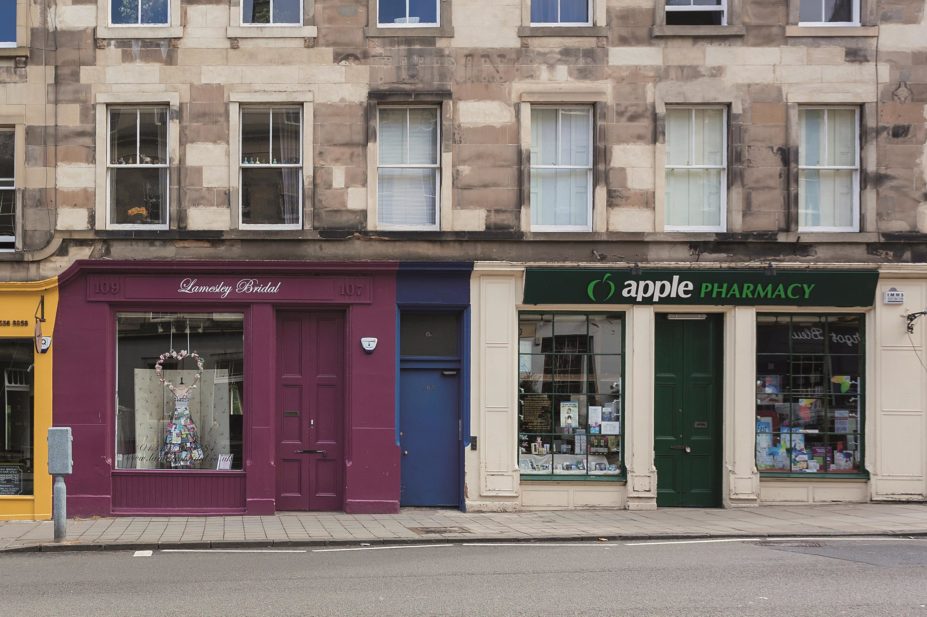
Ivica Drusany / Shutterstock
Up to 600,000 patients will face significant disruption as a result of the government’s proposed funding cuts to the pharmacy budget in England, according to analysis by information and technology services company IMS Health.
In total, IMS Health’s analysis estimates that 2,442 pharmacies in England will be at risk of moderate to very high financial impact from the cuts. This affect will be felt strongest in London, with almost 30% of the 1,643 pharmacies in the London area being placed at “moderate” or “high risk”.
IMS analysed the gross profit of each pharmacy, looking at NHS income from prescriptions and the establishment payment, over-the-counter sales, and the geographic “clustering” of pharmacies.
Presenting the analysis results at a webinar hosted by IMS Health on 21 July 2016, Jonathan Carney, senior principal in supplier services at IMS Health, said pharmacies put at risk of closure by the proposed cuts were more likely to be in cities like London and Manchester.
IMS Health deemed pharmacies to be at risk if they had low gross profit and if more than 15% of this profit came from the establishment payment, which the government has suggested may be phased out as part of its “efficiency” drive. The £25,000 annual payment is made to pharmacies dispensing more than 2,500 prescriptions per month.
A total of 456 pharmacies were deemed at “very high risk of significant impact” and IMS Health identified these as having the lowest gross profit with more than 20% of their gross profit from the establishment fee. Of these pharmacies, 269 are within a ten-minute walk of another pharmacy.
Carney explained that pharmacy closures are most likely to happen among the pharmacies identified as being the most “high risk”, but said for pharmacies at “moderate risk”, purchasing will be the first area of focus for saving money.
“This is to some extent easier to action than removing staff. However, [moderate risk pharmacies] tend to be lower turnover pharmacies and are unlikely to make up all the lost revenue via purchasing efficiencies only,” he added.
IMS calculated that the cuts could cause significant disruption for between 110,000 and 600,000 patients across England in total, with the cuts likely to have a knock-on effect on other health services, such as A&E departments and GP practices.
Also speaking at the webinar, Sandra Gidley, chair of the English Pharmacy Board of the Royal Pharmaceutical Society, said that the “short-sighted” cuts had been driven by the government treasury and that the impact on patients had not been given any thought.
IMS Health says that there are 960 independent community pharmacies at risk of closure, the highest number in any ownership category, although 39% of supermarket pharmacies were at risk, the highest percentage in any category. There were 585 pharmacies at risk in “managed chains” (i.e. Boots and Lloyds), 373 in supermarkets, 175 in groups with more than 25 branches (e.g. Day Lewis), 155 in other national multiples (e.g. Superdrug), 115 in groups with 10 to 25 branches and 73 in groups with 6 to 9 branches.
Gidley said there is probably more “nuance” to the figures than the analysis might suggest, because independent community pharmacists who have paid off their debts would probably be able to survive the impact of the budget cuts. But younger pharmacists who still have debts would suffer.
IMS Health also found a high degree of variation in the proportion of pharmacies at risk within each clinical commissioning group (CCG). In Haringey CCG in London, for example, 48% of pharmacies were at risk of closure, whereas some other CCGs, not identified by IMS Health, had no pharmacies at risk. Of the 25 CCGs with the highest proportion of pharmacies at risk, 12 were in the London area.
Also speaking at the webinar, Rob Darracott, chief executive of Pharmacy Voice, which represents the community pharmacy sector in England, said the outcome of the cuts would be dependent on how they are implemented. He highlighted that the government has not released any firm plans for the cuts but said it was clear the establishment payment would be affected.
The Department of Health announced in December 2015 that the budget for community pharmacy would be cut from £2.8bn to £2.63bn, a 6% reduction. Details of the proposed cuts were expected in July 2016, but have been delayed by the government reshuffle.

